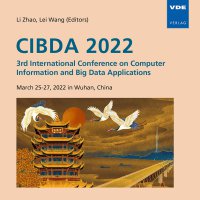Research on the Construction of Curriculum Knowledge Graph Based on GMM
Konferenz: CIBDA 2022 - 3rd International Conference on Computer Information and Big Data Applications
25.03.2022 - 27.03.2022 in Wuhan, China
Tagungsband: CIBDA 2022
Seiten: 4Sprache: EnglischTyp: PDF
Autoren:
Ma, Xiaqing; Xu, Aopeng; Zhang, Zixiang (College of Computer and Information Engineering, Henan University, Kaifeng City, Henan Province, China & Henan Key Laboratory of Big Data Analysis and Processing, Henan University, Kaifeng City, Henan Province, China)
Xu, Tao (College of Computer and Information Engineering, Henan University, Kaifeng City, Henan Province, China & Henan Key Laboratory of Big Data Analysis and Processing, Henan University, Kaifeng City, Henan Province, China & Henan Industrial Technology Academy of Spatio-Temporal Big Data, Henan University, Zhengzhou, Henan Province, China)
Wang, Fengsi (Henan Industrial Technology Academy of Spatio-Temporal Big Data, Henan University, Zhengzhou, Henan Province, China)
Inhalt:
The knowledge hierarchy provided by the curriculum syllabus is the basic principle for the implementation of course teaching and assessment, which usually summarizes knowledge units into a tree-like hierarchical structure in the form of chapters. But it cannot supply the complete picture of knowledge relationships because of the lack of horizontal connections between knowledge units in it. In order to present the characteristics of knowledge units and the many-to-many relationships between them comprehensively and accurately. This paper proposes a method for the construction of course knowledge structures from the massive test question bank with the Gaussian Mixture Clustering model. This method employs the Gaussian Mixture Clustering model to find the knowledge units and their associations from a large number of test questions, then employs the knowledge graph technology to make the course Knowledge Graph, and construct the curriculum knowledge hierarchy. Extensive empirical research focuses on the physics course in eighth grade (first) course in junior high school. Experimental results demonstrate that the constructed curriculum knowledge hierarchy of the physics course is complete and effective. Furthermore, the average coverage of some random final test papers is 89.2%.


